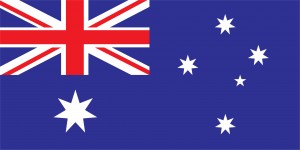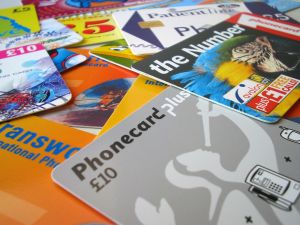Information
 Before traveling to Australia, it is best to take a look over all the basic information you may need abroad including tips on the Australian language, the official name, time zones, counting and numbers, electricity and plugs, currency, banks and ATMs, using the telephone, the state of the Internet and visa information.
Before traveling to Australia, it is best to take a look over all the basic information you may need abroad including tips on the Australian language, the official name, time zones, counting and numbers, electricity and plugs, currency, banks and ATMs, using the telephone, the state of the Internet and visa information.
>> How about this fun guide to things you should know about Australia
Language
Australian English is the official language in Australia. It bares some resemblance with New Zealand English and the English used in Southeast England.
The vocabulary contains many words that Australians consider unique to their language. Some of the best known are: “outback” which means a remote and sparsely populated area and “bush” which means either country area or a native forest.
Australian spelling is usually the same as British English with only few exceptions. Some of the most well known differences include “program” rather than the British “programme”, which leads to the wide belief that the influence of “Americanisation” upon Australian English is quiet strong. On the other hand, Australians use “prawn” rather than “shrimp”.
Australian slang includes many diminutives. For example “barbie” is used instead of “barbecue” and “footy” instead of “rugby”.
>> Learn how to speak like an Aussie
>> Learn about popular Australian slang
Official Name
 Australia is officially known as the Commonwealth of Australia. There are six states and two territories which make up the Commonwealth of Australia: Western Australia, South Australia, Queensland, New South Wales, Victoria, Tasmania, the Northern Territory and Australian Capital Territory (ACT). Australia is the smallest continent.
Australia is officially known as the Commonwealth of Australia. There are six states and two territories which make up the Commonwealth of Australia: Western Australia, South Australia, Queensland, New South Wales, Victoria, Tasmania, the Northern Territory and Australian Capital Territory (ACT). Australia is the smallest continent.
>> Read about the Australia Flag
>> Learn about the Australian cities and regions
Time Zone
There are three time zones in Australia:
- Eastern Standard Time (EST): New South Wales, Australian Capital Territory, Victoria, Tasmania and Queensland. EST is 11 h ahead of GMT.
- Central Standard Time (CST): South Australia (10 h and 30 min ahead of GMT; DST used) and Northern Territory (9 h and 30 min ahead of GMT).
- Western Standard Time (WST): Western Australia. WST is 9 h ahead of GMT.
Daylight Saving Time is used in all Australian regions and territories, except from Northern Territory and Queensland.
In Australian Capital Territory, New South Wales, South Australia, Tasmania and Victoria DST will start Oct 3, 2010 and end Apr 2, 2011. DST is not practiced in Queensland, the Northern Territory or Western Australia.
Counting and Numbers
 Dates in Australia, just like in Europe, are written with the day first, then the month and then the year. Most commonly, dates are written 23 January 2008 and not January 23, 2008. However, due to the Americanisation of Australian English, using the US format is quite common as well.
Dates in Australia, just like in Europe, are written with the day first, then the month and then the year. Most commonly, dates are written 23 January 2008 and not January 23, 2008. However, due to the Americanisation of Australian English, using the US format is quite common as well.
Commas and decimal points are used just like in the US. So, AUD 3.20 means 3 Australian Dollars and 20 cents.
Australia uses the metric system for measurements and Celsius for temperatures. In order to convert from Metric to Imperial, you can use this conversion tool.
Electricity and Plugs
Australia operates on a 240V/50 Hz electrical system and the electrical outlets are V-shaped flat prongs. If you travel to Australia and your camera / laptop etc doesn’t accept 240V/50Hz you will need a converter or a transformer (which are more stable and can be used continuously). Make sure to check your equipment carefully before you plug it in anywhere.
>> Learn about what to pack for Australia
Currency
 Australia uses the Australian Dollar (AUD). Denominations include the 5, 10, 20, 50 and 100 banknotes and the 1 and 2 dollars coins, as well as the 5, 10, 20 and 50 cents coins. Do check the current conversion rates before you go.
Australia uses the Australian Dollar (AUD). Denominations include the 5, 10, 20, 50 and 100 banknotes and the 1 and 2 dollars coins, as well as the 5, 10, 20 and 50 cents coins. Do check the current conversion rates before you go.
Banks and ATMs
It is always good practice to inform your bank that you will be withdrawing money in Australia. Make sure your card allows such transactions; check the transaction limits and the commissions applicable. When using the ATMs, make sure to keep all receipts just in case (double charging is not very common, but might just happen).
From Monday to Thursday, banks are open from 9:30 AM to 4 PM in most locations, while on Friday banks are open from 9:30 AM to 5 PM. Some banks are even open on Saturdays.
All major credit cards are accepted in Australia, although some remote locations might not accept them. Most commonly accepted cards include: American Express, Bankcard, Carte Blanche, Diners Club, MasterCard and Visa. Travelers checks can be cashed in either at banks or at hotels.
>> Learn about Australia travel costs
Using the Telephone
 The country code for Australia is 61. To call Australia from the US, you should first need to dial out of the US and into Australia. So that’s 0011 + 61 and then the Australian phone number. To call within the country, just dial the number you were given. To call the US from Australia, dial 00 + 1 and then the US number (area code + telephone number).
The country code for Australia is 61. To call Australia from the US, you should first need to dial out of the US and into Australia. So that’s 0011 + 61 and then the Australian phone number. To call within the country, just dial the number you were given. To call the US from Australia, dial 00 + 1 and then the US number (area code + telephone number).
Most public phones accept coins and prepaid telephone cards. Sundays are excellent days for making both local and international calls because of the discounts. The prepaid telephone cards can be purchased at any newsagency or post office.
Three major mobile phone carriers operate in Australia: Vodafone, Optus and Telstra. It makes it very easy to activate the roaming feature and ask your carrier what network to connect to when arriving in Australia.
Useful Telephone Numbers
In Australia the national emergency number is 000. An operator will answer and ask what service you require: Police, Fire or Ambulance. Newer digital phones might require you to dial 112, the international emergency number.
>> Learn how to call Australia from overseas
>> Learn how to call Australia using Skype
Australian Internet
The state of the Australian Internet is probably going to be a bit lower than one might expect. Internet is generally more expensive, less widespread (given the barren expanse of land mass in the country) and slower. If coming for a visit be sure to read the article on Internet in Australia to be more prepared on what to expect.
Visa Information
All visitors except New Zealanders require a visa. There are several visa options for people who want to visit Australia as a tourist.
ETA (Visitor) is designed for travelers who want to visit Australia for tourism, holidays, recreation or informal studies and training. The visa is valid for up to 3 months and a service fee of AUD 20 is applied. Residents from the following countries are eligible to apply for ETA: Andorra, Austria, Belgium, Brunei, Canada, Denmark, Finland, France, Germany, Greece, Hong Kong (SAR), Iceland, Ireland, Italy, Japan, Liechtenstein, Luxembourg, Malaysia, Malta, Monaco, The Netherlands, Norway, Portugal, Republic of San Marino, Singapore, South Korea, Spain, Sweden, Switzerland, Taiwan, United Kingdom – British Citizen and British National (Overseas), United States of America and Vatican City.
Tourist visa is for people who want to visit Australia for holiday or recreation, visit family and/or friends or study for up to three months. Travelers may apply for a stay up to 12 months or shorter. There might be charges applicable. In order to apply for the visa there are certain health, insurance, financial and character requirements. Here you can find more information about the Tourist Visa.
>> Learn about Australia Work Visas
>> Learn about working holidays in Australia